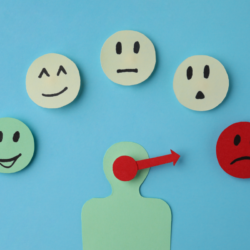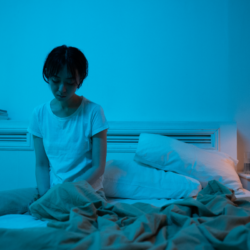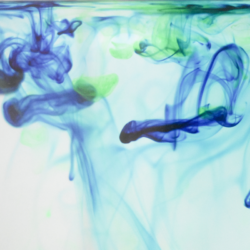As the arrival of the cold season brings with it the traditional ‘winter blues’ for some people, researchers are besieging depression from all sides: what are its origins and mechanisms, and can it be prevented?
What is society’s image of winter SAD?
Winter darkness is experienced differently in different cultures. At high latitudes and in Canada, where the climate is harsh, people have had to get used to the rigours of winter by inventing festivals to compensate for them. Saint Lucia is just one example. In traditional China, the way of life took into account and adapted to the specific nature of the different seasons. Unlike in the West, winter was not a negative experience.
Seasonal affective disorder is a mood disorder characterised by depressive symptoms. These symptoms generally occur with the change of season. SAD has recently been recognised as a pathology in its own right. Its treatment primarily involves light therapy.
Light therapy is also more effective than antidepressant treatment in treating SAD. What’s more, there’s no risk of withdrawal and only mild, temporary side effects. It is therefore the first choice for treating SAD.
Can light therapy prevent SAD?
Light therapy is the first-choice treatment for SAD. A typical light therapy session involves exposure to a 10,000 lux lamp (a unit of measurement for illuminance) from a distance of around 30 centimetres for 30 minutes within two hours of waking up. The length of exposure is proportional to the intensity of the lamp. The patient can carry out different activities, such as reading or using a computer, during the session. The therapeutic effects are generally seen after one or two weeks.
Although an association between mood and seasonality has been known since ancient times, seasonal affective disorder has only been studied as a psychiatric clinical entity since the early 1980s. Today, there are many papers on the subject, referring to seasonal affective disorder or winter depression. There are several diagnostic tools, the most widely used being the Seasonality Questionnaire. The worldwide prevalence of the disorder rises with latitude, reaching 10% in northern countries.
Who is affected by SAD?
SAD affects between 1% and 3% of the general population. It most often occurs in autumn or winter, when the days are short and not very bright, and disappears in spring. It can affect adults and children alike, although the average age is between 20 and 40, with women predominating (75%).
What are the symptoms?
The change in circadian rhythm during the winter period can cause the following symptoms:
- Depressed mood
- Marked anxiety
- Reduced energy
- Difficulty concentrating
Hypersomnia and compulsive consumption of sugary foods are the two typical symptoms of winter depression. Some people may also experience these symptoms during low-light periods in summer, but this is less common.
In short, the main diagnostic criterion is the recurrence of the same symptoms during two consecutive winter periods (with disappearance in between seasons). During the winter period, exposure to sunlight, sufficient physical activity, a balanced diet and fixed bedtimes can sometimes be enough to alleviate the symptoms.
When treatment is needed for SAD, light therapy is the first choice. The response rate is between 60 and 90%. If symptoms persist, antidepressant treatment or cognitive behavioural therapy can be introduced. These treatments can be combined if there is no response to one of them.
Demographic factors
Epidemiological studies indicate that certain demographic factors can influence vulnerability to SAD. Age is a determining factor: young adults are often more affected than older people, which could be explained by greater sensitivity to environmental and social changes. In addition, the prevalence of winter depression varies according to gender, with a higher incidence in women than in men, a disparity that could be linked to hormonal factors.
Geographical location also plays a crucial role. Individuals living in regions far from the equator, where days are shorter in winter, are statistically more likely to develop seasonal depressive symptoms. In addition, socio-economic variations can exacerbate this condition: limited access to well-lit and heated spaces can aggravate feelings of unease and confinement.
Genetic predisposition
Research has shown that the predisposition to SAD can be, in part, genetically rooted. Individuals with a family history of affective disorders, particularly depression, are at greater risk. This vulnerability may be due to the heritability of certain biological characteristics, such as the regulation of serotonin and melatonin, hormones involved in the regulation of mood and sleep-wake cycles.
It is crucial for healthcare professionals to recognise these at-risk groups in order to put in place appropriate preventive strategies. This may include targeted interventions, such as light therapy for people living in areas with low levels of sunlight, or enhanced psychological support for those with a genetic predisposition to depression. Early identification and intervention can make a significant contribution to reducing the impact of SAD in vulnerable populations.
What impact does winter have on mental health?
The effect of cold on mood
The arrival of winter is often accompanied by a drop in temperature, a phenomenon that can significantly affect our psychological well-being. Cold weather is associated with reduced exposure to natural light, which in turn reduces the production of serotonin, a neurotransmitter essential for regulating mood. This decrease can lead to a form of lethargy and a feeling of general malaise.
In addition, low temperatures can influence our social behaviour and daily activities, making us less inclined to go out and take part in activities that promote good mental health. It has been observed that the sensation of cold can amplify feelings of loneliness and anxiety, contributing to a drop in morale.
Social isolation in winter
Winter can also be synonymous with social isolation. The shorter days and colder weather encourage people to spend more time indoors, reducing opportunities to socialise. This isolation can be particularly difficult for people who live alone or who are far from family and friends.
Prolonged isolation can have a detrimental effect on mental health, leading to feelings of abandonment and an increase in depressive disorders. It is crucial to recognise the impact of social isolation and to look for ways to stay connected with others, whether through face-to-face meetings, where possible, or through digital means, such as video calls, to compensate for the lack of human interaction.
Awareness of these psychological effects of winter is essential if we are to put in place preventive strategies and tailored interventions that can help maintain emotional balance during this time of year.
How can Naturopathy help prevent seasonal depression?
- Adopt a healthy diet
- Produce more dopamine through sport
- Take care of yourself
- Listen to music
- Treat yourself
- Ventilate for at least an hour every day
- Let some light into your home
- Fill up on Omega 3 and magnesium
- Make up for vitamin D deficiency
- Increase your serotonin levels
- Adopt a positive attitude
- Go to bed at a regular time
The aetiopathogenic data are based on circadian rhythm disorders (phase delay) influenced by the photoperiod and the involvement of melatonin, the production of which is linked to light, acting on numerous biological parameters. Light therapy is the first-line treatment used to compensate for the lack of light in winter, but there are also effective psychotherapies (cognitive-behavioural therapy, interpersonal and social rhythm therapy). The link between the body’s normal adaptation to the seasons, in parallel with animal hibernation, and the pathology of winter depression is food for thought.
Medicinal plants and winter depression
EPS of St John’s Wort :
The pharmacological action of St John’s Wort is similar to that of conventional antidepressants, combining several mechanisms of action in a synergistic way.
Its activity is linked to inhibition of the reuptake of neurotransmitters (mainly serotonin, but also dopamine and noradrenaline) and a moderate interaction with GABA-A receptors. The antidepressant effect is probably due to a synergy between different substances. St John’s Wort is indicated for depressive states (mild to moderate depression), but especially for seasonal depression that occurs during nervous fatigue and physiological states such as the menopause. However, no positive effect should be expected before 10 to 14 days of treatment.
- The World Health Organisation recognises the use of oral St John’s Wort in the treatment of “mild to moderate depression” as “clinically established”.
- The European Scientific Cooperation on Phytotherapy recognises the use of oral St John’s Wort to relieve “mild to moderate depression”.
- The US National Institutes of Health considers the use of oral St John’s Wort to be “based on strong scientific evidence” “for the treatment of mild to moderate depression with similar efficacy to other antidepressant drugs “, and the use of oral St John’s Wort for the treatment of “psychosomatic disorders” to be “based on good scientific evidence”.
Dosage: 5 ml mixed in a large glass of water, to be drunk twice a day for 1 month, renewable for 3 months.
-
Mode of action of St John’s Wort :
St John’s Wort is a non-specific inhibitor of monoamine reuptake. This inhibition is not competitive, unlike that seen with synthetic antidepressants such as fluoxetine. This results in an increase in serotonin activity.
Selective inhibition of monoamine oxidase type A (MOA-A), an oxidoreductase that deaminates monoamines (noradrenaline, serotonin and dopamine), protects the central and peripheral nervous systems from food-borne amines and plays a central role in mood stabilisation. Its selective inhibition therefore increases the levels of these monoamines.
These properties were initially attributed tohypericin, but in reality preparations lacking it are active, indicating that its activity is weak on the depressive component. However, by binding to Y1 and Y2 neuropeptide receptors, which are thought to play a role in anxiety and depression, and by having a sedative and melatoninergic action,hypericin is thought to contribute to the anxiolytic activity of St John’s wort. Hyperforin has also been shown to be one of the major constituents involved in the plant’s antidepressant activity.
A 2014 literature review on hyperforin showed that, in addition to its interesting antidepressant properties, the molecule is potentially of great pharmacological interest. It is involved in the metabolism of the β-amyloid peptide (APP) precursor, preventing the amyloidogenic pathway by promoting the formation of the sAPP derivative. It indirectly inhibits the reuptake of neurotransmitters and modulates their concentration in the synaptic space by regulating cellular concentrations of cations such as Na , Ca2 and Zn2 . TRPC6 channels and mitochondria appear to be the two main targets of hyperforin, which has a preferential effect on the adult cortex rather than the hippocampus in the central nervous system.
Did you know that?
St John’s Wort cancels out the contraceptive effect by eliminating ethinylestradiol when taken at the same time as an oral contraceptive. St John’s Wort therefore needs to be used with great care, and attention should be paid to the many drug interactions. St John’s Wort interacts with a very large number of medicines and plants, which severely limits its use: more than 70 substances or families of substances have been identified as interacting with St John’s Wort! This phenomenon is due to hyperforin’s activation of a liver enzyme responsible for eliminating many substances, which can speed up the elimination of many drugs and reduce their effectiveness.
One rule applies: if you are taking any type of medicine, plant or dietary supplement, always ask your doctor or pharmacist for advice before taking a St John’s Wort-based product. With or without a prescription, St John’s Wort should always be used under medical supervision. The active ingredients of St John’s Wort appear to act synergistically. In vitro, crude extracts of St John’s wort and its main active ingredients, namely its naphthodianthrones (hypericin), phloroglucinols (hyperforin, adhyperforin) and flavonoids (e.g. amentoflavone) have shown activity at several receptors.
Medical literature and clinical trials:
- Wichtl M., Anton R., Plantes thérapeutiques. Tradition, officinal practice, science and therapeutics, Tec & Doc, 1999
- Linde K., St. John’s wort. An overview, Forsch Komplementmed, 2009
- Laakmann G. et al, St John’s wort in mild to moderate depression; the relevance of hyperforin for the clinical efficacy, Pharmacopsychiatry, 1998
- Bennett D.A. Jr et al, Neuropharmacology of St. Jon’s Wort (Hypericum), Ann Pharmacother, 1998
- Barnes J. et al, St John’s wort (Hypericum perforatum L.); a review of its chemistry, pharmacology and clinical properties, J Pharm Pharmacol, 2001
- Soleymani S. et al, Clinical risks of St John’s Wort (Hypericum perforatum) co-administration, Expert Opin Drug Metab Toxicol, 2017





